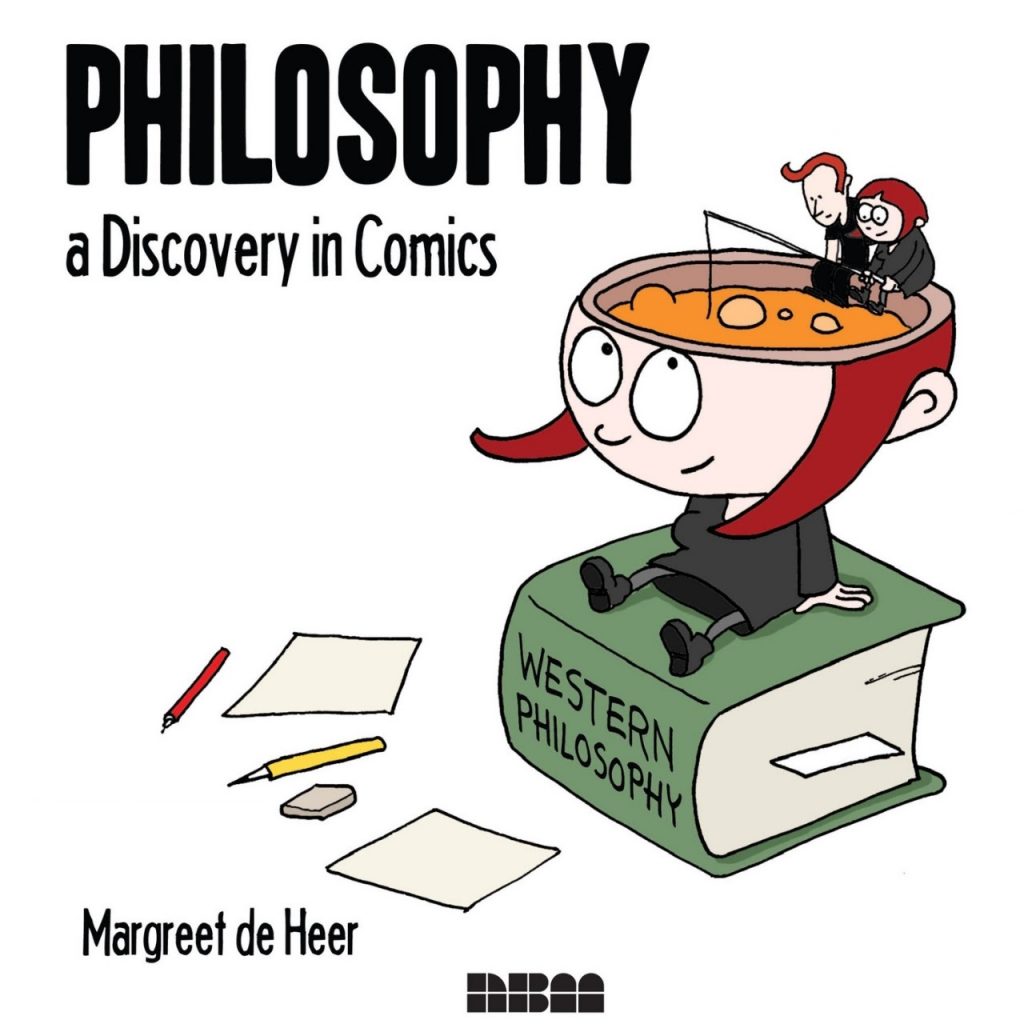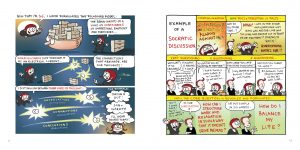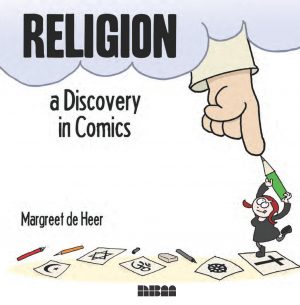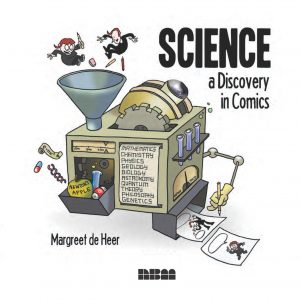Review by Karl Verhoven
At first glance Margreet de Heer’s work resembles that of cartoonists marketed to death, cute, cheerful figures offering unoriginal observations found on coffee mugs. Don’t make that mistake. In fact she’s a fine exponent of what comics are able to do so well, yet so rarely seem to try: taking a topic and exploring it from several angles, broken down into easily digested one page sections.
Philosophy is the logical investigation of existence, truths and behaviour, and to many an intimidating subject even before taking the extensive historical building blocks into consideration. De Heer’s work in making it accessible, therefore, is a considerable achievement in itself. She eases us in gently by introducing her own philosophical awakenings from the early stages of childhood, discoveries we can all identify with, before moving to what differentiates us from the animal kingdom, and only then hitting the historical heavyweights. Anyone discovering him for the first time will be astounded at Aristotle’s legacy.
It’s not just a case of parroting text books, though, as de Heer includes her own observations such as “remarkable how philosophers are so often considered subversive elements in politically unstable times”. Her definition of philosophy is “gaining wisdom and living your life accordingly”. Other explanations are as astute, and a strong final section features a number of de Heer’s friends, ordinary individuals enthusing about people who’ve made them think, and why. Nietzsche is a member of the traditional philosophical hierarchy, but other selections of George Carlin and George Steiner demonstrate how practical communication is important in conveying ideas, while de Heer’s brother pulls thoughts from places as diverse as Harry Potter and Dutch comic artist Marten Toonder. Purists may sneer, but the important aspect is surely demonstrating that what we absorb shapes us, no matter the source.
Compared to her later books, at this stage there’s still a crudity to de Heer’s cartooning. It gets the job done, but it’s at a level of proficiency below refined technique. What’s important is the clarity and the expressive nature, and de Heer already excels at both, able to communicate complex ideas in an easily absorbed way, often in a single illustration, although some diagrams are required.
What’s no different from de Heer’s later companion volumes is the sheer amount of information packed in, and surely some of it will be news even to the philosophically informed, as de Heer pulls in information from other disciplines. In her discussion of what constitutes reality, for instance, she points out the limitations of the human senses. Only a twenty-third of the electro-magnetic spectrum is visible to even the best human eyes, our greatest sensory input. So what does that indicate about how sure we can be about reality?
This is an ideal primer for a vast subject. Explore no more, and you’ll still have absorbed the basics and be able to hold your own with Woody Allen.




